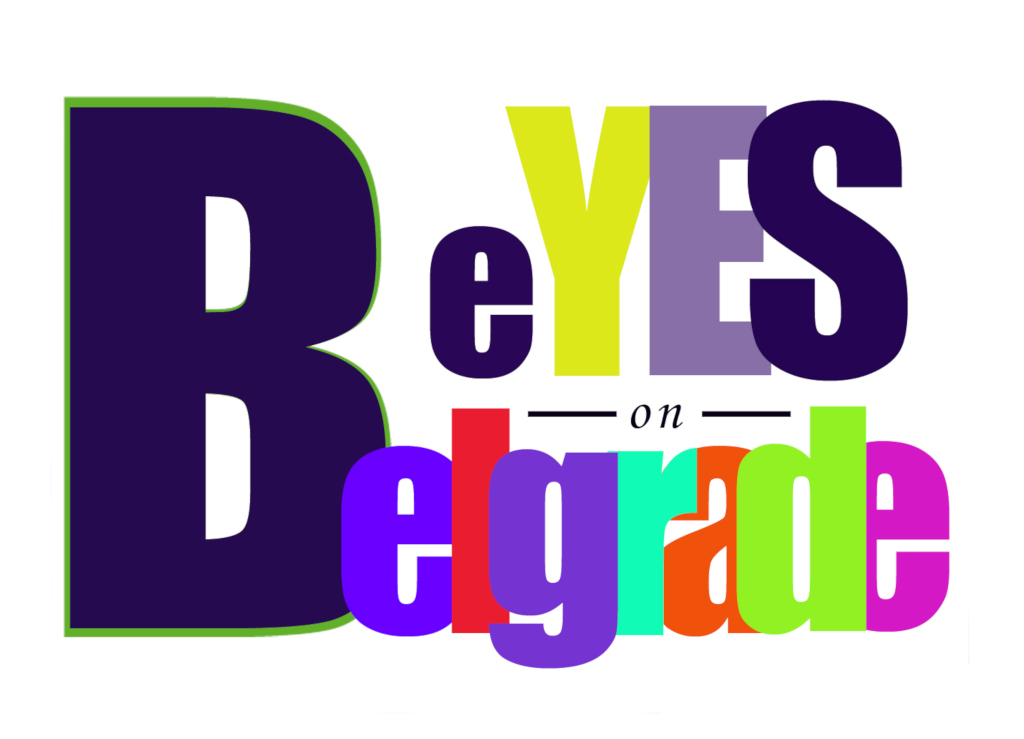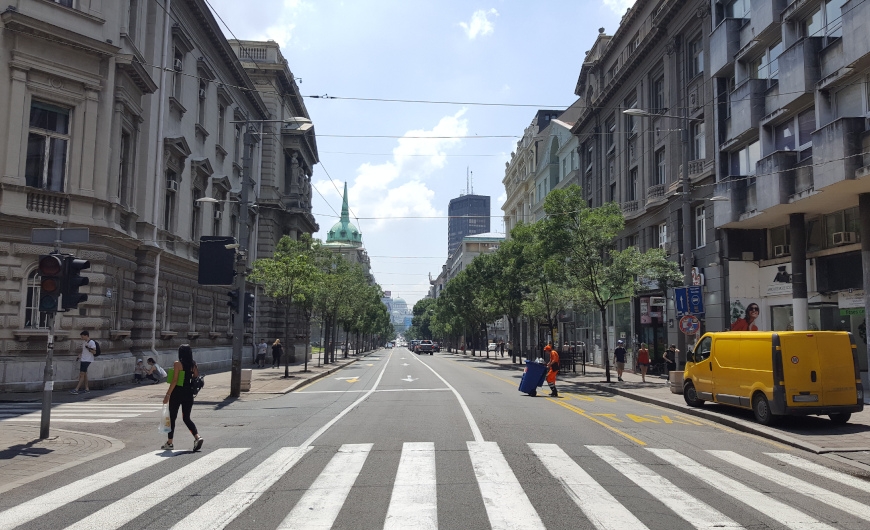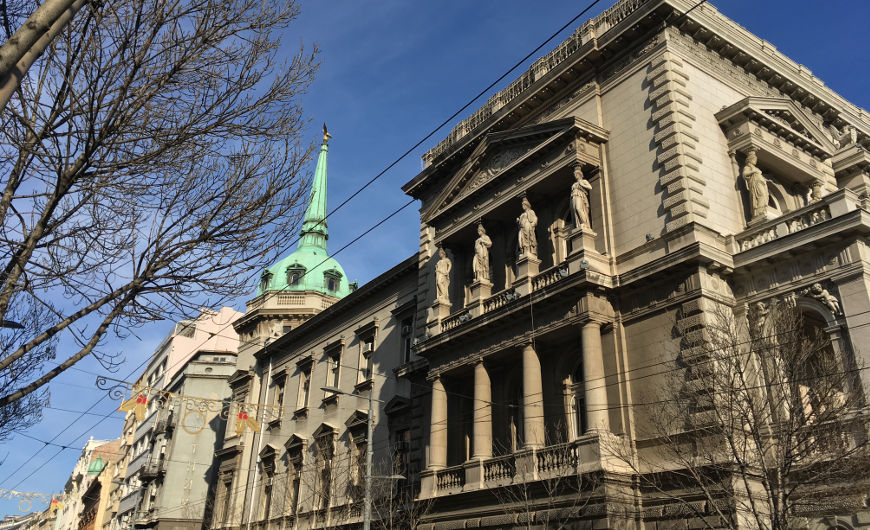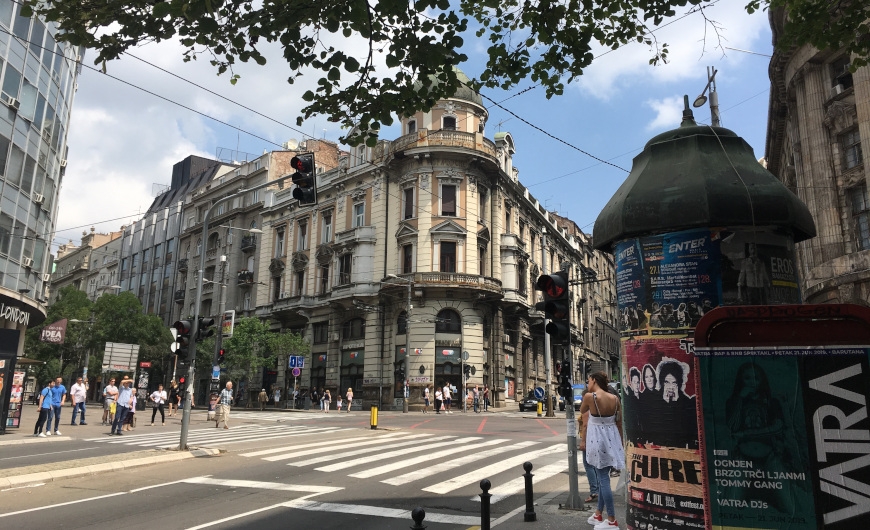Kralja Milana (eng. "King Milan street") is one of the central avenues in Belgrade. It goes on from Terazije Square to Slavija Square, for about 1 kilometer.
The street bears the name of King Milan (1854-1901), the first king of modern Serbian state.
Many of the important buildings are located in this street, for example the Old Palace (now Belgrade City Hall), the New Palace (now Presidential Palace), and the Yugoslav Drama Theater. A memorial museum/appartment of the famous Serbian paintor Paja Jovanović is situated in this street, and also there is a direct access to Andrićev Venac, street dedicated to our Nobel Prize winner, Serbian writer Ivo Andrić, with its monument and appartment/museum. A popular meeting point, "Cvetni trg" (eng. "Flower Square"), with lots of coffee shops is on the way to Slavija Square.
A famous and once the tallest building in Belgrade ("Beogradjanka", eng. Belgrade Palace) is rising high above the street. Walking from Terazije Square to Slavija Square, you can see in the distance a monumental St. Sava's church, one of the largest Christian cathedrals in the world.
Looking at the buildings, in the same fashion that it occurs at Terazije square, you can guess with 90% of chance that, whatever edifice you turn your eyes to, it was constructed with the purpose of holding the offices of a bank or some insurance company. Often, there is an inscription on the proper facade of a building explaining who was it built for.
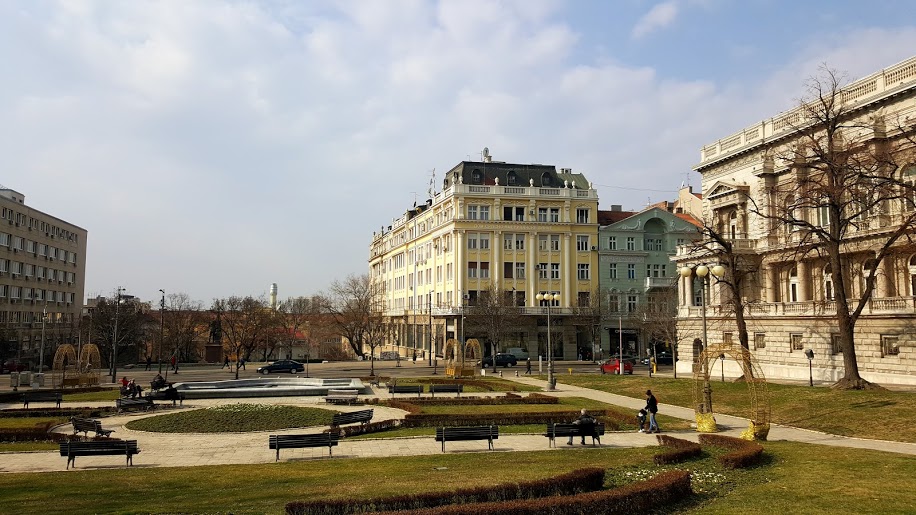
Two very important crossroads are on the path of this street. The first one, if you go from Terazije square, is what is commonly reffered to as "London square", the intersection with Kneza Miloša street. The next one is the intersection with Resavska street. Other than having nice and stylish buildings, these crossroads lead you to some of the main Belgrade's landmarks and attractions. You can read about it in separate articles.

In 2018, near Slavija square, a prestigious Hilton hotel was opened. Minutes away from St. Sava's Church, Nikola Tesla Museum or King Alexander blvd., this 4-star hotel is perfect for tourists as much as for business oriented people.
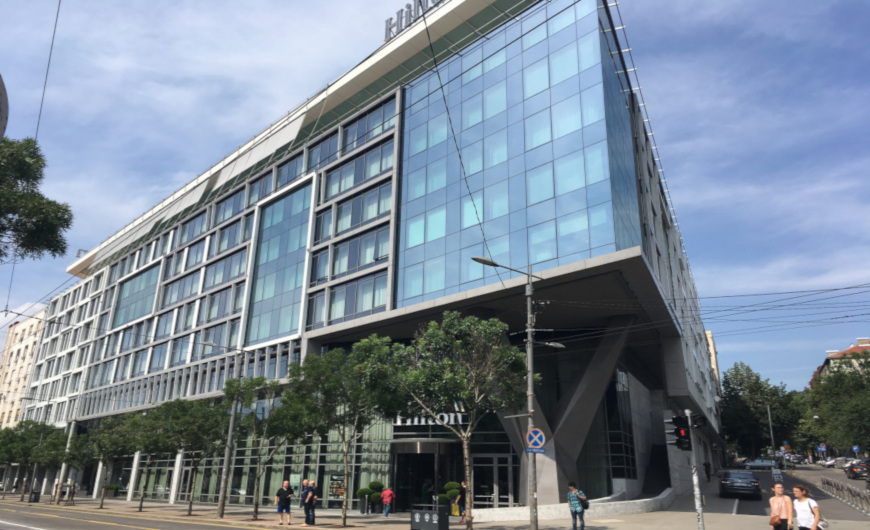
Here are some of the most interesting buildings you can admire in Kralja Milana street.
Old Vračar Savings Bank
This wonderful edifice originally constructed for the head office of the Vračar Savings Bank lies on the corner of Kralja Milana street and Kneza Miloša street, at the crossroad commonly known as London square.
Year of construction: 1906
Architecture: European academism, influenced by German renaissance and baroque
Location: 9, Kralja Milana street, Stari Grad district
Right upon the construction of the building, a pharmacy moved to the premises in the ground floor that remained there until the present day.
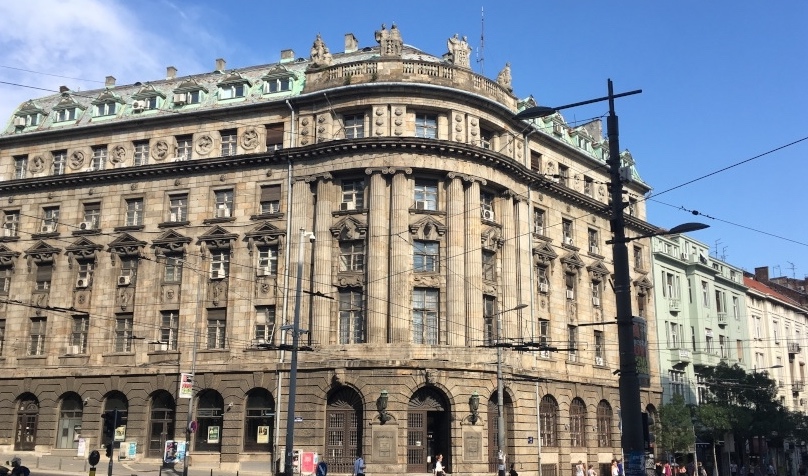
Old "Jadransko-Podunavska Bank"
The monumental building of "Jadransko-Podunavska" Bank (eng. "Adriatic-Danubian Bank") is perfectly located at the corner of Kralja Milana street and Kneza Miloša street, which is commonly known as "London square".
Year of construction: 1924
Architecture: academism
Location: 11, Kralja Milana street, Vračar district
Nearly 100 objects, sculptures, and other types of ornaments are placed on the facade of the building. It is a perfect example of decorative academism in architecture.
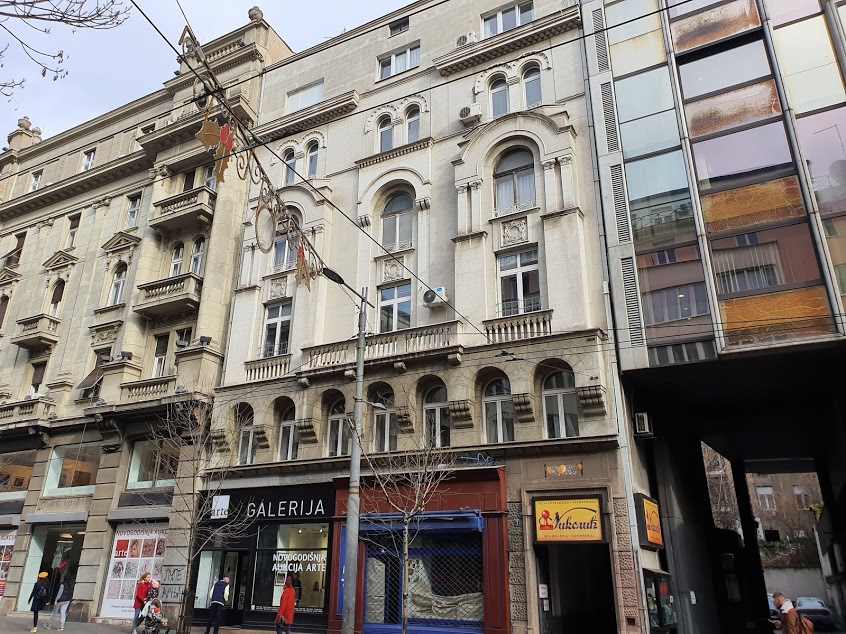
Konstantinović House
This building is located in Kralja Milana (eng. "King Milan") street, close to Andrićev Venac and the New Palace (now Presidential Palace).
Year of construction: 1927
Architecture: Serbo-Byzantine style (upper floors).
Location: 3, Kralja Milana, Vračar district
Ground floor is designed in the style of academism, and it was intended for stores, while the upper floors were reserved for luxurious appartments. This means that the edifice was predominantly built for renting.
This is actually a three-styled building, as the last floor was added later, designed in a modern fashion. So, when you look at this building you will see a perfect mix of academic, Serbo-Byzantine, and modern style of architecture. It is quite symbolic,as well, because it can be argued that these are the predominant styles in Belgrade's architecture between two world wars.

Savčić House
This remarkable building is lying at the corner of Kralja Milana street and Andrićev Venac.
Year of construction: 1926
Architecture: in the manner of 19-century Academism
Location: 1, Kralja Milana street, Stari Grad district
Miloš Savčić was the wealthiest man in Belgrade between two world wars. His building was right next to the New Palace, where Serbian king Alexander resided. They said that the king complained: "Every morning Savčić looks at my bedroom". And it is really that close. Consequently, the king moved to a new residence in Dedinje district. Being a successful businessman, as they would say these days, Savčić was also Lord Mayor of Belgrade. He was rational and business oriented. The ground floor and the mezzanine od the building were reserved for shops, while the upper floor were intended for Savčić, his wife, and their five children. The interesting thing is that the main entrance is not in its natural position, on the corner. It is moved to the side. This was done because of the economic reasons of renting the ground floor. Savčić followed the principle "money first, then the aesthetics".

Old Serbian-American Bank building
This exceptional building was constructed right accross the Old Palace (now City Hall), as the home of the Serbian-American Bank.
Year of construction: 1931
Architecture: Neoclassicism
Location: 10, Kralja Milana, Stari Grad district
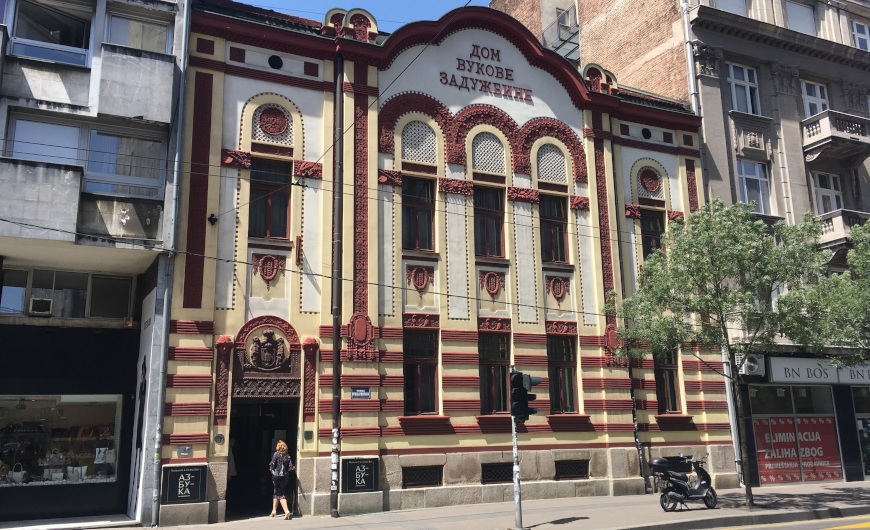
House of Vuk's Foundation
Dom Vukove zadužbine (eng. "House of Vuk's Foundation") was originally built as the head office of the Ministry of Education of Kingdom of Serbia and later Kingdom of Yugoslavia.
Year of construction: 1871
Architecture: Serbo-Byzantine style.
Location: 2, Kralja Milana, Stari Grad district


Flower Square
Cvetni Trg (Flower Square) is overlooking a giant Belgrade Palace skyscraper, and two extraordinary buildings originally built for military purposes - Officers' Club building (now Students' Cultural Center) and Officers' Cooperative Building (now department store), and it is located both in Njegoševa street and in Kralja Milana street, close to Slavija square... (read more in separate article)
 English (United Kingdom)
English (United Kingdom)  Srpski latinica (Srbija)
Srpski latinica (Srbija) 